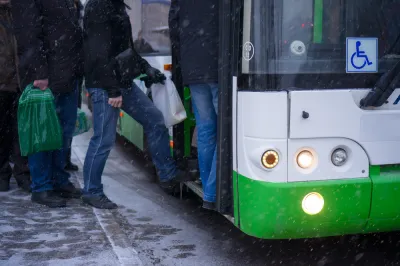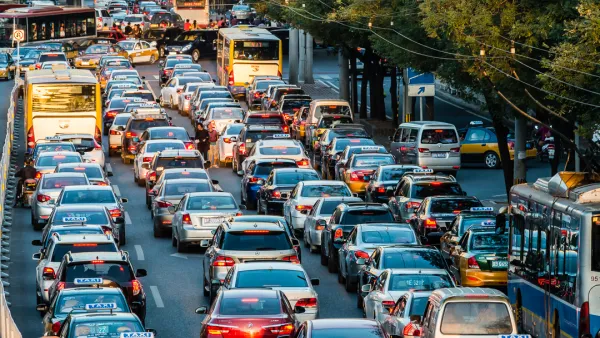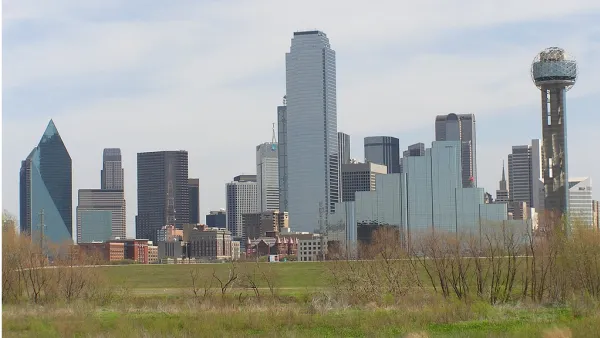Despite the decline in gas prices, cars are still a luxury for many low-income Americans, and low-income zip codes still tend to have low car ownership rates.

A couple of weeks ago, I read a story in the Philadelphia Inquirer: "For workers in Philadelphia’s poor neighborhoods, car ownership often a necessity and a privilege." The article, and the Twitter buzz about the article, discussed low income workers who were unable to reach jobs without cars, and claimed low-income workers can afford used cars. Certainly, this story has a grain of truth: not every job is accessible to people without cars, and there are many low-income workers who purchase them—perhaps even more so in recent years as gas prices have declined. Does this mean that there are no more carless poor, or that we don’t need to have buses and trains to accommodate them?
If that were the case, low-income neighborhoods would have car ownership rates comparable to those of other neighborhoods. But low-income neighborhoods usually do nor have car ownership rates comparable to other neighborhoods. In one of North Philadelphia’s poorest zip codes (West Philadelphia’s 19104, which has a 46 percent poverty rate), 57 percent of households do not own a car—as opposed to 31 percent for the city as a whole, and 26 percent for a richer zip code next door (19130, the Art Museum area). Similarly, in zip 19121, 51 percent do not own a car. And we don't know what the car-owning majority had to give up to afford their cars.
These areas are relatively close to Philadelphia’s flourishing downtown. What about poor areas further out? Suburbanites generally own cars—but even so, low-income suburbanites are far less likely to own cars than middle-class suburbanites. For example, Chester, Pennsylvania is a low-income suburb where only 31 percent of households lack a car. But this percentage is still far higher than the percentage for most Philadelphia suburbs. In Chester County, only 4 percent of households are carless, and in closer-in Delaware County, only 10 percent. Similarly, at the outer edges of the city of Philadelphia itself, low-income areas have more car owners than the poor areas closest to downtown, but fewer than nearby middle-class areas. For example, zip code 19120 at the city's edge has a 31 percent poverty rate and a 27 percent carless-household rate—much lower than that of close-in poor areas, but still far higher than affluent areas that are also at the edge of the city, such as zip code 19118 (11 percent carless) or 19128 (8 percent).
Of course, Philadelphia is more dense, and has better public transit, than most cities. What about car-dependent cities like Atlanta? Zip code 30314 contains Vine City, one of Atlanta’s poorest neighborhoods—and there 31 percent of households do not have a car, about the same as in Chester. Similarly, in downtown zip code 30303 (which has a 56 percent poverty rate) 34 percent of households have no car. By contrast, in 30309 (an affluent midtown zip code), only 8 percent of households lack cars—lower than the citywide average of 16 percent.
Similarly, in the poorest zip code of Jacksonville, Florida (32202) 38 percent of households had no cars—far below the citywide average of 8 percent, and also far below that of affluent intown zip codes such as 32207 (which includes the San Marco neighborhood just a mile from downtown, and has an 11 percent carless rate).
In sum, it is clearly the case that poverty-packed neighborhoods still have car ownership rates far below that of nearby middle- and upper-class areas. What, if anything, should be done about this, I leave for others to discuss (at least for the time being).

National Parks Layoffs Will Cause Communities to Lose Billions
Thousands of essential park workers were laid off this week, just before the busy spring break season.

Retro-silient?: America’s First “Eco-burb,” The Woodlands Turns 50
A master-planned community north of Houston offers lessons on green infrastructure and resilient design, but falls short of its founder’s lofty affordability and walkability goals.

Delivering for America Plan Will Downgrade Mail Service in at Least 49.5 Percent of Zip Codes
Republican and Democrat lawmakers criticize the plan for its disproportionate negative impact on rural communities.

Test News Post 1
This is a summary

Test News Headline 46
Test for the image on the front page.

Balancing Bombs and Butterflies: How the National Guard Protects a Rare Species
The National Guard at Fort Indiantown Gap uses GIS technology and land management strategies to balance military training with conservation efforts, ensuring the survival of the rare eastern regal fritillary butterfly.
Urban Design for Planners 1: Software Tools
This six-course series explores essential urban design concepts using open source software and equips planners with the tools they need to participate fully in the urban design process.
Planning for Universal Design
Learn the tools for implementing Universal Design in planning regulations.
EMC Planning Group, Inc.
Planetizen
Planetizen
Mpact (formerly Rail~Volution)
Great Falls Development Authority, Inc.
HUDs Office of Policy Development and Research
NYU Wagner Graduate School of Public Service






























